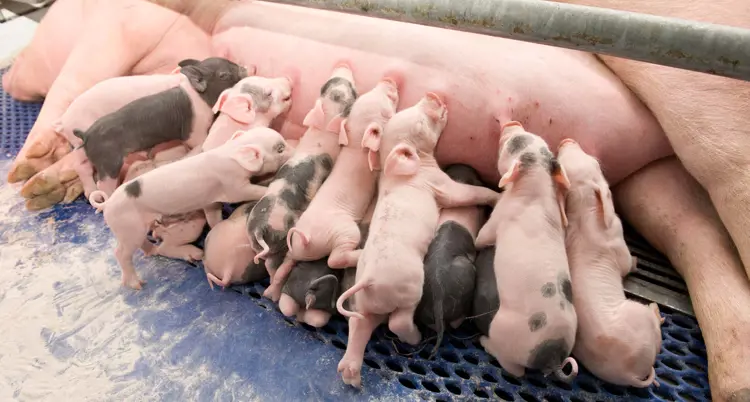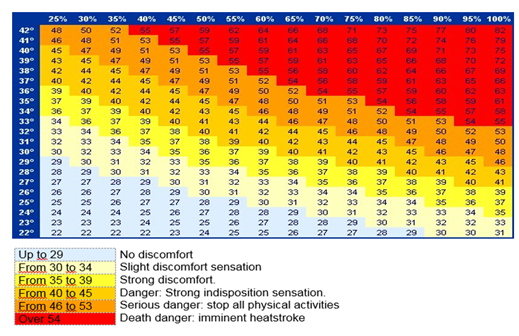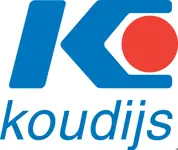Lactating sows: heat stress only in summer?
This is the time of year when everyone pays extra attention to preventing heat stress. But why focus only on summer? Lactating sows can suffer from heat stress year-round in the farrowing house. At 90% humidity and a temperature of 22°C, a sow is already experiencing heat problems, as the optimal temperature for a sow is around 18 to 20°C. Therefore, it is important to take appropriate measures throughout the year without overdoing it.

Farm management
Good farm management measures are by far the most effective against high temperatures. In addition to the right climate settings, cooling systems have proven effective in practice over recent years. However, a crucial point is that the misting of cold water in the inlet air must be well thought out. If this only results in higher humidity without sufficient temperature reduction, it will have a counterproductive effect (see Figure 1). Be aware that at high temperatures, pigs can only dissipate heat through contact with the floor and increased respiration.
Additionally, consistently applying feeding levels and schedules is important. At high temperatures, feeding schedules and levels are often adjusted in various ways, such as:
- Feeding smaller portions more frequently. However, increased activity due to extra feeding times significantly raises the barn temperature.
- Feeding later in the evening is a common recommendation, but the higher temperatures still remain in the barn.
- Feeding three times a day, with the first two meals early in the morning and potentially skipping the last meal, is a good method.
This brings us to feeding levels. Keeping lactating sows eating is more important than aiming for maximum intake. In previous articles on Koudijs’ sow vision, we explained the sow’s battery function. Especially in warmer periods, we need to trust this. Skipping a feed timely means 33% less intake for that day, which is only 2.5 kg to 3.0 kg less at the peak of the lactation period. But if a sow is pushed too hard and stops eating for one or several days, the setback is much greater. The results in the next litter and the sow’s lifespan are then much more at risk. This is where the 'autumn abortions' originate.
Equally important is feeding for recovery after lactation, especially if sows have eaten less during warm periods. However, if sow farmers consistently adjust their feeding schedule to the condition of weaned sows, more animals will automatically be on the recovery feed schedule during these periods.
What nutritional options are available?
There are nutritional options that can particularly help lactating sows. Since lactating sows can face some degree of heat stress year-round, it is advisable to apply these measures throughout the year, in order of importance:
- Correct choices in crude fiber sources: prioritize the right choices for fiber fractions to avoid constipation and ensure good coordination with gestation feed. Under these conditions, fibers that produce less internal heat are preferred. Fermentable fibers result in higher heat production in the animal than inert fiber sources.
- Focus on SID Digestible Amino Acids, not crude protein: high crude protein levels lead to higher internal heat production. Be cautious with a higher application of synthetic amino acids, particularly those that are normally less limiting, such as isoleucine, leucine, histidine, and valine.
- More concentrated composition: coordination with gestation feed and avoiding constipation remains the primary requirement. Under this condition, a more concentrated composition will align with options 1 and 2.
- Support from vitamins, minerals, and additives:
- Increase the use of antioxidants, such as vitamin E, vitamin C, or Oxiguard. Heat stress, due to increased metabolism and respiration frequency, causes excessive production of free radicals in the animal, leading to oxidative stress.
- Replace part of the choline with betaine and/or increase the betaine level. This supports maintaining feed intake and milk production during heat stress due to betaine’s osmolytic effect.
- Be cautious with steering the electrolyte balance in feed optimizations. Sows on a diet with a low dEB level are more sensitive to heat stress. Heat stress causes an increased respiration rate, resulting in a lower bicarbonate (HCO3-) level in the blood. The increased respiration rate further lowers the sow’s electrolyte balance, creating a vicious cycle. Only when using a pre-lactation/transition feed, it might be wise to increase the dEB level in the second phase lactation feed by using sodium bicarbonate (1-3 kg/mT).
What else is important?
- Water supply: For every 1 kg of feed intake, a sow needs 5 liters of water, which amounts to 25 liters per day with a feed intake of 5 kg per day. Additionally, water (through contact with the snout and intake) cools the sow. Ensure the water is not too cold, as this reduces intake. A water temperature around 15°C is preferred. Also, consider the freshness of the water, unlimited access to water, and the correct nipple pressure (2.5-4 liters/min for lactating sows).
- Feed hygiene: At higher temperatures and lower feed intake, maintaining feed hygiene becomes even more important. Consider using benzoic acid or sodium benzoate (against yeasts), propionic acid (against mold formation), and formic acid (to lower pH for better effectiveness of benzoic acid and/or propionic acid). Additionally, prevent fat oxidation by using clean oil/fat tanks and adding antioxidants to fats and oils.
Figure 1 Influence of Humidex on heat stress in sows (Rozeboom, 2013).
Do you want to know more about how to create optimal conditions for lactating sows?
About the author

Suzanne Hendrikx
Specialist Swine
Do you have any questions or would you like more information? Get in touch with Suzanne.
